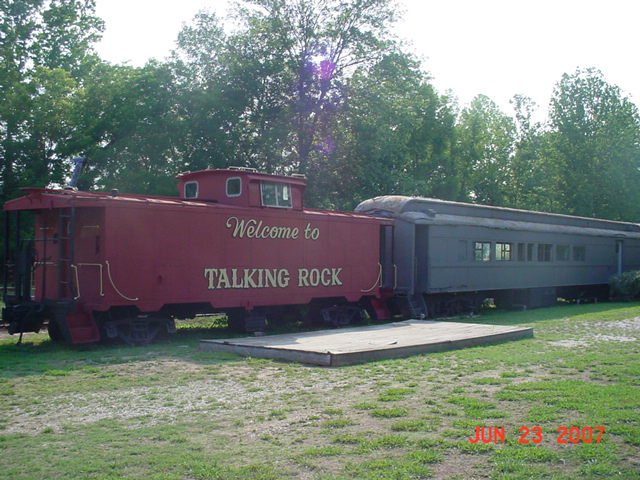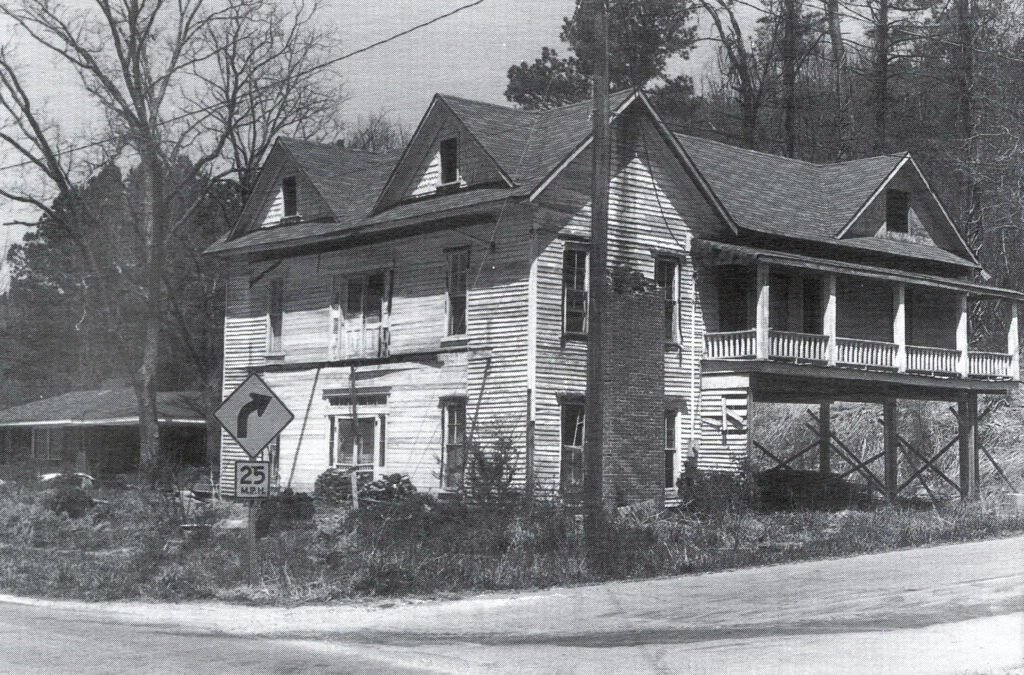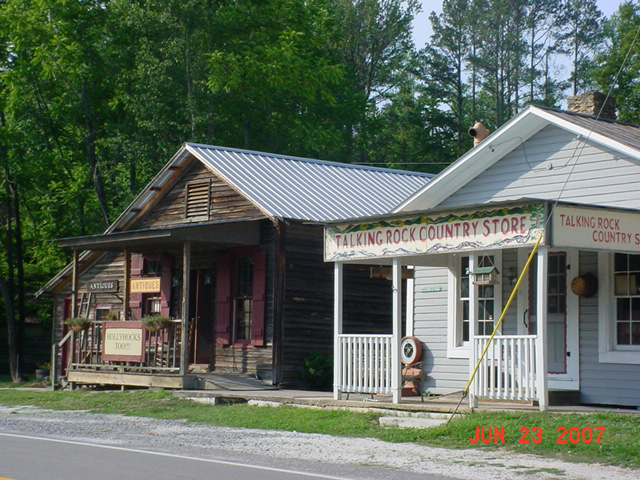The town of Talking Rock, as well as a creek of the same name, is located in Pickens County in northwest Georgia. The area was originally part of the Cherokee Nation, and several explanations regarding the origin of the name Talking Rock exist.
Historian James Mooney wrote that the Cherokees called the creek “Nunyu-gunwaniski,” meaning “rock that talks.” An Indian trader told Mooney that the creek was named for a rock where the Cherokees held council. Nearby is Ball Creek, probably named for Indian ball games played at the council ground. An 1820 map shows Talking Rock Creek as “Rolling Stone Creek.” One theory suggests the name could have come from an “echo rock,” a natural echo chamber.

In 1805 the state of Georgia surveyed the Federal Road, its first state highway, through the Cherokee Nation and across Talking Rock Ford at the site of the present-day Highway 136 bridge.
The Sanders brothers, who were Cherokees, gave their name to the first community established there, Sanderstown. In 1819 missionaries built the Taloney mission (later Carmel mission), a day school for the Cherokees, along Talking Rock Creek. Later, the Fort Newman stockade was built nearby. Cherokees were held at Fort Newman before their forced removal to the West in 1838.

At the subsequent white settlement of Talking Rock, in the late 1840s, English-born brothers William C., James, and Thomas Atherton built a cotton factory, a cotton gin, a wool carder, a gristmill, a sawmill, and a blacksmith shop. The Lebanon Presbyterian Church stood at the “Y” fork in the road. During the Civil War (1861-65) the Third Kentucky Cavalry (Union) defeated the local Confederate Home Guard in 1864, putting a temporary halt to the depredations against local pro-Union families. The Atherton mills were destroyed during the war, and the Lebanon Church, except for its cemetery, was destroyed in a snowstorm in 1888.
Modern Talking Rock grew up and incorporated in 1883 around the newly arrived railroad, which facilitated the growth of the marble industry in the area. The original community, at the ford, became today’s Blaine community. The new Talking Rock eventually became larger than Jasper, the seat of Pickens County. It had a factory, mills, cotton gins, stores, and hotels.

After World War II (1941-45) the decline of marble and cotton caused Talking Rock to wither into hardly more than a few churches, scattered farms, and ruins. The incorporated town of Talking Rock today consists of antique stores, a schoolhouse museum, and according to the 2010 U.S. census, sixty-four residents.










